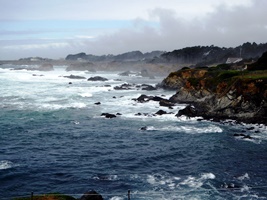
I vividly remember my first visit to this special garden in Fort Bragg on the coast of northern California. I was still fairly new to rhododendrons and the RSBG and it was my first exposure to maddenias and many of the tender big-leafs growing outside without protection. With its year-round mild temperatures, this coastal garden has an almost perfect climate for a very large portion of the genus Rhododendron. I was blown away by this and, like all gardeners, envied their ability to grow plants that I could not. Since that first visit, I have had the opportunity to visit this garden many times and have enjoyed watching it grow and develop, always somewhat envious of the thriving and blooming tender rhododendron species and hybrids.
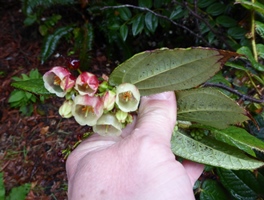
Since then, over the course of my career with the RSBG, I have had the opportunity to visit many areas of the world with a climate similar to that of the northern California coast (western Scotland, Cornwall, New Zealand, etc.) and have had the pleasure of seeing many fine specimens of tender Rhododendron species including massive old trees of the big-leafs R. sinogrande, falconeri, etc. as well as flower-laden old plants of nuttallii and dalhousiae. In these regions with mild climates, the maddenias and the big-leafs are widely, and easily, grown. The reality of the situation in these gardens is that each group (big-leafs and maddenias) has species that are very closely related, often hard to tell apart from one another and that easily cross with their relatives. The result of the cultivation of these closely related species in close proximity to one another is masses of self-sown seedlings and rampant hybridization.
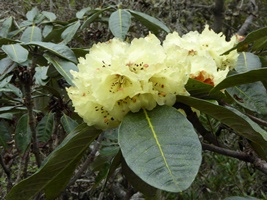
Unfortunately, it was once common practice to collect open-pollinated (and thus almost definitely contaminated – i.e. hybridized) seeds from these rare treasures and innocently distribute them as the straight species and/or to grow them on and distribute the resulting hybrid “species” as the “real thing”. To compound the problem, open-pollinated seed is often then collected from these supposed species several years later, once again as the “real thing” but now with an even more convoluted background as the original hybrid seedling probably crossed with another hybrid (or species) to even further muddle its heritage.
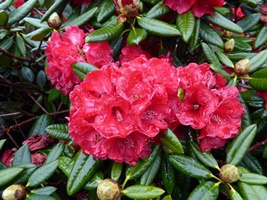
These hybrids of jumbled, unknown provenance, though often quite beautiful, are all too common in collections, gardens and nurseries in those climates where they can be grown successfully. Such is the case at the Mendocino Coast Botanical Garden where many of the older, un-named or misidentified plants are obviously derived from open-pollinated seed. I was recently invited down to the garden to inspect and attempt to properly name their substantial Rhododendron collection and took no pleasure in informing them that many of their plants were obviously misidentified hybrids and so of no real botanical value other than being attractive plants horticulturally. Of course, they also have a large selection of quite properly named and well-grown species and hybrids and it is a real treat to see flourishing and blooming, large old specimens of the big-leafs and some of the more tender maddenias that we could never hope to grow outside in our colder climate.
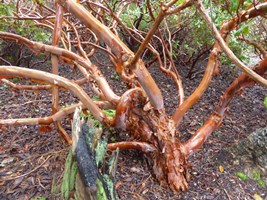
The RSBG is working with the MCBG to establish a more complete collection of tender Rhododendron species so that these taxa, many of them quite rare in the wild, may be preserved in a climate more conducive to their long-term conservation. I highly recommend a visit to the MCBG if you have the opportunity. In addition to the beautiful plants, you can view migrating whales swimming just off the coast!

